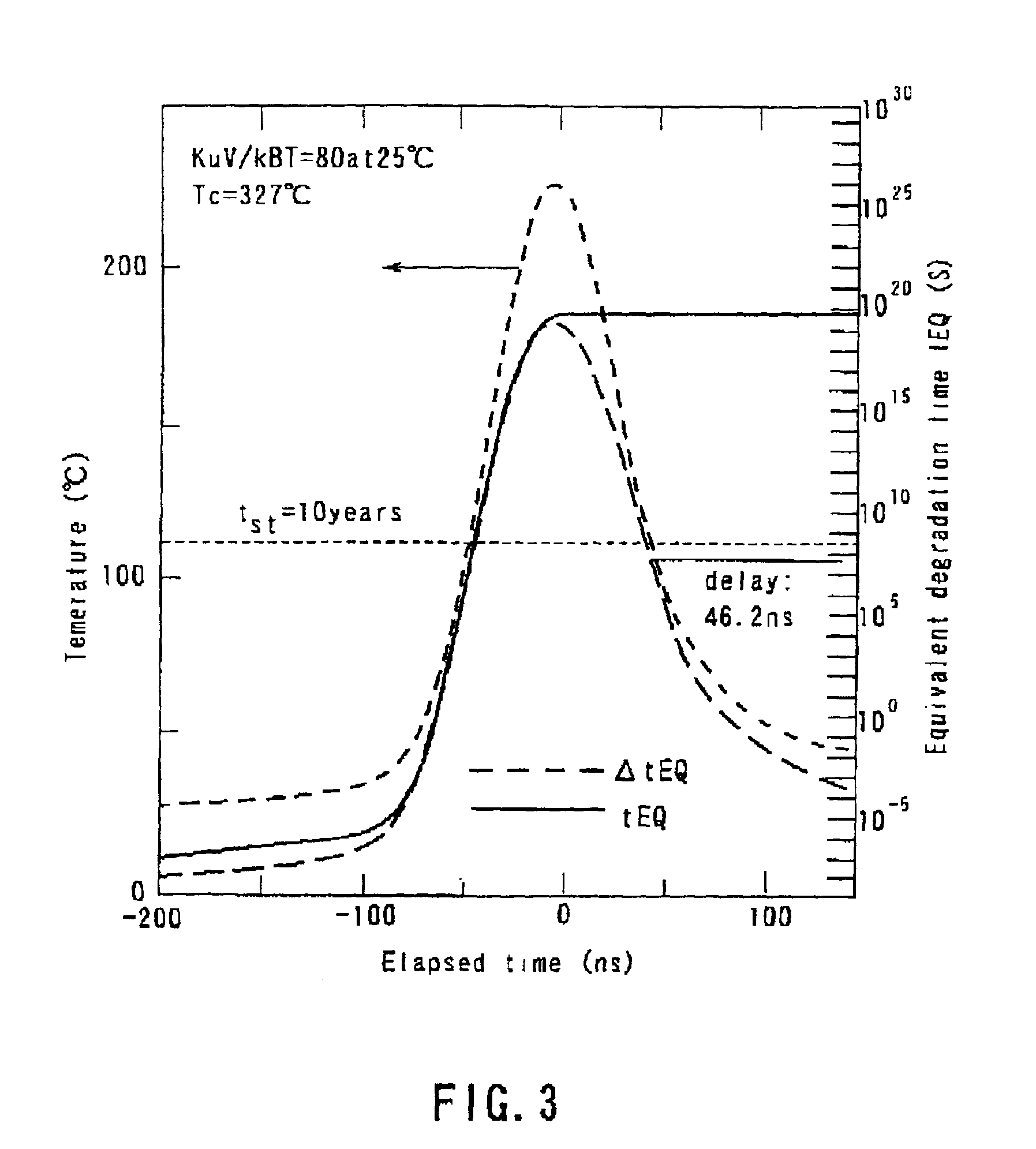Magnetic recording apparatus and method of designing the same
a recording apparatus and magnetic recording technology, applied in special recording techniques, recording signal processing, instruments, etc., can solve the problems of physical limit of magnetic recording density, unreasonable to expect a further improvement of recording magnetic field, and inability to maintain the direction of spin once recorded, etc., to achieve easy to design, and the effect of high-density recording exceeding the thermal fluctuation limi
- Summary
- Abstract
- Description
- Claims
- Application Information
AI Technical Summary
Benefits of technology
Problems solved by technology
Method used
Image
Examples
example 1
[0063]Fabricated was a magnetic recording apparatus constructed as shown in FIG. 2. The magnetic recording medium comprises a 2.5-inch glass substrate 21 and a stacked structure formed on the glass substrate 21, the stacked structure including the SiO2 first underlayer 22 having a thickness of about 100 nm, a ZnO second underlayer 23 having a thickness of about 140 nm, a CoCrPt magnetic recording layer 24 having a thickness of about 20 nm, and a carbon protective layer 25 having a thickness of about 10 nm. The slider 27 having a magnetic head equipped with the recording-reproducing element 26 mounted to the tip, which is similar to that used in the ordinary HDD apparatus, is arranged in the magnetic recording apparatus of the construction described above. When the magnetic recording medium is rotated, the slider 27 and the recording-reproducing element 26 are made in a floating state on the magnetic recording medium. In this magnetic recording apparatus, a flying height of 30 nm is ...
example 2
[0070]Fabricated was a magnetic recording apparatus equal to that prepared in Example 1, except that used was a magnetic recording layer differing in composition from that used in Example 1 and that the temperature of at which the coercive force Hc becomes substantially zero (Curie point Tc) was 500K (227° C.). For the magnetic recording layer, the value of βst of was 150. Also, the stable retention time tst required for the system was five years.
[0071]A recording experiment was conducted as in Example 1 in respect of the magnetic recording apparatus thus prepared. An analysis was performed as in FIG. 3, with the result that the magnetic field application time (delay) required for the recording was 54.6 ns. In fact, a high CNR was obtained when the distance between the recording gap and the laser spot was set at 300 nm, which corresponds to 60 ns, or more.
[0072]Another experiments were conducted, in which signals recorded with a single frequency by setting appropriately the distance...
example 3
[0076]Fabricated was a magnetic recording apparatus as in Example 1, except that the SiO2 underlayer was omitted to allow the underlayer to be formed of a ZnO layer alone having a thickness of about 100 nm and that the magnetic recording layer was formed of a CoPt—O layer having a thickness of about 20 nm. For the magnetic recording layer, the temperature at which the coercive force Hc becomes substantially zero (Curie point Tc) was 1420K, and the value of βst was 150. Also, the stable retention time tst required for the system was five years.
[0077]Experiments were conducted in respect of the magnetic recording apparatus, in which the magnetic recording medium was irradiated with a laser beam after the thermally-assisted magnetic recording as in Example 2. In Example 3, however, in order to examine the resistance to cross erase, the irradiating portion with the laser beam was displaced from the initial recording track at an interval of 10 nm and brought back again to the portion of ...
PUM
| Property | Measurement | Unit |
|---|---|---|
| retention time tst | aaaaa | aaaaa |
| time | aaaaa | aaaaa |
| time | aaaaa | aaaaa |
Abstract
Description
Claims
Application Information
 Login to View More
Login to View More - R&D
- Intellectual Property
- Life Sciences
- Materials
- Tech Scout
- Unparalleled Data Quality
- Higher Quality Content
- 60% Fewer Hallucinations
Browse by: Latest US Patents, China's latest patents, Technical Efficacy Thesaurus, Application Domain, Technology Topic, Popular Technical Reports.
© 2025 PatSnap. All rights reserved.Legal|Privacy policy|Modern Slavery Act Transparency Statement|Sitemap|About US| Contact US: help@patsnap.com



